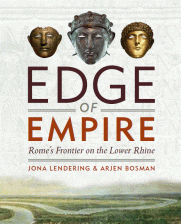It is often assumed that the Greek researcher Herodotus of Halicarnassus (c.480-c.429) visited Babylon, the cultural capital of the ancient Near East. His description of sacred prostitution is believed so widely that the word “Babylon” has become synonymous with sexual liberty. However, this custom is not mentioned in the thousands of cuneiform tablets that have been discovered in the nineteenth and twentieth century – and although we may one day find a tablet that confirms Herodotus’ story, this becomes increasingly unlikely. There is a point where absence of evidence becomes evidence of absence.
And there are more details that are simply wrong. No one who had visited the city could have said that it had hundred gates, had a wall that was 88 kilometers long, 100 meters high and 25 meters thick. In the eighteenth century, the British historian Edward Gibbon wrote in his copy of the Histories:
These dimensions, which have been devoutly swallowed by the voracious herd, are gigantic and incredible … Thirteen cities of the size of Paris might have stood within the precincts of Babylon … I much doubt whether he ever saw Babylon.
Many modern scholars agree, but we should be honest: Herodotus does not claim to have visited the city. He does write things like “people who have not been there, will find it hard to believe that…” and “this was still there in my days”. Highly suggestive, but there is not a single explicit statement that he actually visited the place.
Literature
- A. Kuhrt, “Babylon”, in: E.J. Bakker, I.J.F. de Jong, H. van Wees (eds.), Brill’s Companion to Herodotus (2002)
- R.Rollinger, Herodots Babylonischer Logos. Eine kritische Untersuchung der Glaubwürdigkeitsdiskussion (1993)

 Subscribe to feed
Subscribe to feed
David, I think we may finally (finally!) be able to put the myth of sacred prostitution to bed: see the BMCR review of Stephanie Budin’s new book, “The Myth of Sacred Prostitution in Antiquity”.
Yep, I noticed. Thanks.